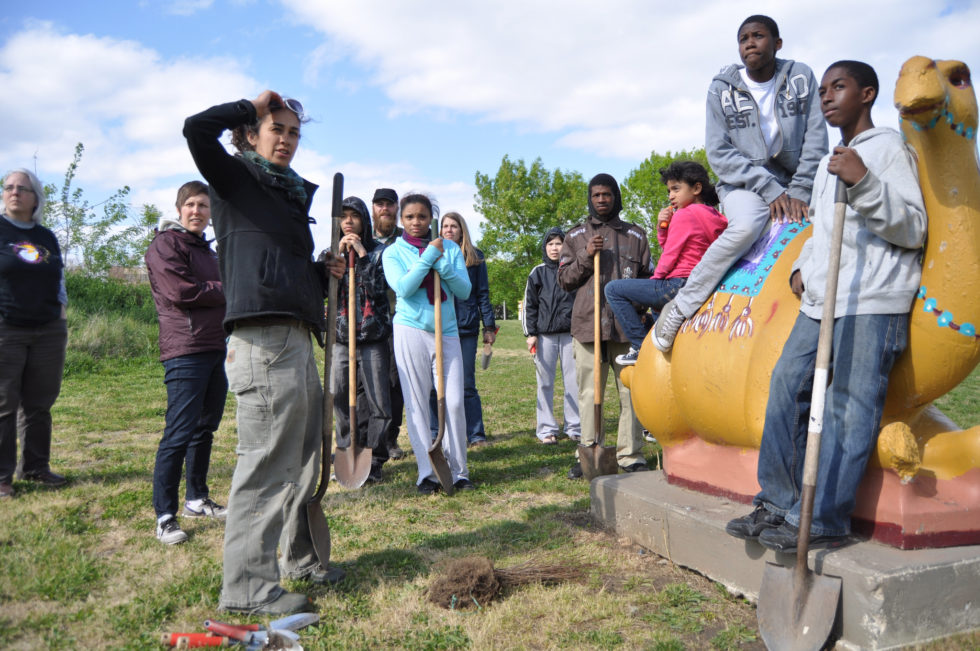
This article was originally published in the Fall 2024 issue of MennoMedia’s Leader Magazine. Illustration of George Blaurock generated using DALL-E by Tim Nafziger, August 26, 2024
As Mennonites and other Anabaptists prepare to celebrate the 500th anniversary of Anabaptism, we are marking the anniversary of January 21, 1525, when George Blaurock and Conrad Grebel gathered with others for a secret meeting in the house of Felix Manz in Zurich, Switzerland.
Earlier that day these reformers had lost a contentious theological debate in the city. Zurich city council had declared their meetings illegal and ordered them to baptize all their unbaptized children. Yet those gathered felt the bible was leading them differently: baptism should be an adult decision upon confession of faith. Blaurock turned to Grebel and asked him to baptize him. As the story goes, Grebel obliged and Blaurock became the first Anabaptist: twice baptized.
But this story is only one part of the Anabaptist origins. It is a story that has been told to intentionally minimize the stories of other radical reformers.
Mennonite Action and Vincent Harding
Before we tell the full origin story, let’s go 499 years forward to another January morning, this one in 2024. It’s January 16 and over a hundred Mennonites are walking through the Cannon House Office Building in Washington, D.C. This is part of the Capitol complex: “temple of our Democracy” according to house speaker Nancy Pelosi.
Those gathered are part of a group called Mennonite Action calling for a ceasefire in Gaza. On a pre-arranged signal, they all sit down. It is a creative disruption, like Jesus’ nonviolent direct action in the temple in Mark 11:11-19. Rather than pulling out a whip, the Anabaptists sit down and began singing hymns until they are arrested by Capitol police.
Mennonite Action is building on the work of groups like Pink Menno, Community Peacemaker Teams and On Earth Peace. These are Anabaptist-rooted groups who have gone beyond conscientious objection to actively working for justice and peace. They have often faced pushback from Mennonites who are more focused on personal holiness and traditional ideas of nonresistance.
(more…)
TimN
August 27, 2024
Anabaptism, Four Streams of Anabaptism Series, Mennonite Action, Nonviolence, Peace & Peacemaking, Politics, Power, Social movements
Read more >

This post was originally published two years ago as MMMMs: Expanding our Churchly imagination in my blog for The Mennonite. Thanks to Hannah Heinzekehr for adding photos to illustrate this piece.
In the wake of this summer’s Mennonite Church USA convention and the pending departure of Lancaster Conference, I am reflecting on the role of “Moderate Mennonite Male Managers” (MMMM’s) in our institutions. This recent essay by John Rempel inspired me to look specifically at a blind spot common among the the “Moderate Mennonite Male Managers” (MMMM’s) of our institutions. For those of you who haven’t read it, this quote summarizes Rempel’s thesis well:
Each type of church brings different gifts to the table. Moderates bring the willingness and capacity for meaningful compromise. Liberals bring the capacity to live with ambiguity and with matters that are presently incapable of solution. Conservatives bring a deep trust in the Bible and the Holy Spirit as sources of clear positions in matters of faith and life.
I resonate with Rempel’s 1 Corinthians 12 inspired vision of the different gifts of the body of Christ that he outlines. However, Rempel’s paradigm, focused around liberals, moderates and conservatives, misses a whole swath of our community and Anabaptist tradition.
To understand more about this missing community, I turn to the model of four streams of Anabaptism that Rodney Sawatsky outlined in 1992. In summary, he traces four contemporary streams of Anabaptism back to our 15th century origins: Separationist, Establishment, Reformist and Transformationist. I will focus in this article on the transformationist, but you can see Sawatsky’s table with all four in my 2007 blog post. These streams do not map perfectly onto Rempel’s model of liberals, moderates and conservatives, but however you slice the cantaloupe, the transformationist stream is glaringly absent.
(more…)
TimN
October 27, 2017
Four Streams of Anabaptism Series, Group Identity, Institutions, Mennonite Church USA, Power, Privilege, Race, Sexismbureaucracy
Read more >
Editor’s Note: 10 years ago, we kicked off this blog. Over the coming months, we’ll be hosting a series of posts reflecting back on the last 10 years. Thanks to Tom Airey, co-editor of our sister blog, RadicalDiscipleship.net for this second post in this series. – Tim Nafziger

Caption: Tom (right) listening to Ched Myers during a conversation by a stream in California in 2011 with Elaine Enns in background.
by Tom Airey
When Young Anabaptist Radicals launched a decade ago, I was out West reading compelling scholarship from Walter Brueggemann, Brian McLaren, N.T. Wright, Marcus Borg and John Howard Yoder (WGWW: white guys with websites), moved by their mapping of a much needed “post-Evangelical” Christian terrain. I took their ideas at face value: meaning that I yearned to apply many of their convictions to my own ministry, marriage, church and vocation. But I frequently found myself day-dreaming about what these authors are like in real time. Of course, there’s always a gap between word and deed, but I was becoming more and more uncomfortable with my own SCS (Seminary Celebrity Sensationalism). We white male academics are the masters at hero-worshipping our favorite authors, pastors, scholars and philosophers. (more…)
TomA
October 6, 2016
10 Year Anniversary series, Anabaptism, Anabaptist Camp Followers, Mennonite Church USA, Power, Sexism, Social justice, Social movements, TheologyJohn Howard Yoder
Read more >
16th century German historiographer and reporter Sebastian Franck (1499-1543) wrote concerning the Anabaptists in his work Chronik (III, fol. 188):
The course of the Anabaptist was so swift, that their doctrines soon overspread the whole land and they obtained much following, baptized thousands and drew many good hearts to them; for they taught, as it seemed, naught but love, faith and endurance, showing themselves in much
tribulation patient and humble. They brake bread with one another as a sign of the oneness and love, helped one another as a sign of oneness and love, helped one another truly with precept, lending, borrowing, giving; taught that all things should be in common and called each other ‘Brother.’ They increased so suddenly that the world did fear a tumult for reason of them. Though of this, as I hear, they have in all places been found innocent. They are persecuted in many parts with great tyranny, cast into bonds and tormented, with burning, with sword, with fire, with water, and with much imprisonment, so that in few years in many places a multitude of them have been undone, as is reported to the number of two thousand, who in divers places have been killed….they suffer as martyrs with patience and steadfastness (Rise and Fall of the Anabaptists, 28).
AOG
October 19, 2015
Anabaptism, Biographical, Church, Group Identity, History, Love, Martyrdom, Spiritual Life
Read more >

This is a cross-posting of a piece first posted eight years ago on my blog for The Mennonite. Since then we organized a series here on YAR looking at some of the historical groups that Sawatsky highlights. You can read the articles in that series here.
What if rather than one unified view of Anabaptist we instead looked at our tradition as containing many different streams, in the same way that Richard Foster finds different streams of Christian spiritual practice in Streams of Living Water?
Last week on Young Anabaptist Radicals I wrote about Gregory Boyd’s discovery of Mennonites as well as his dismay at our falling away from our roots. It provoked a lively discussion about percieved divisions in the Mennonite church and deviation by Mennonites from core Anabaptist values. One of the things that became clear in the discussion is that there are many different views of what the core Anabaptist values are and how they should be lived out.
Growing up as a Mennonite, I learned that the way we live our faith is tied to the experience of our predecessors in 16th Century Europe. Though I didn’t study it until college, Harold S. Bender’s Anabaptist Vision informed much of what I viewed as Mennonite. Writing in 1944, Bender defined the Swiss Brethren tradition as “the original evangelical and constructive Anabaptism” as opposed to the other streams of Anabaptism “which came and went like the flowers of the field.”
And so it was the story of the Swiss Brethren re-baptizing one another in 1525 in Zurich that I learned at the Mennonite high school I attended. Felix Manz, Conrad Grebel and George Blaurock were the founding fathers of our faith. As Mennonites today we should look to their example.
This summer at the Mennonite convention in San Jose, I heard an alternative to this model. At a workshop I attended, Dale Schrag introduced four different types of Anabaptism first proposed in 1992 by Rodney Sawatsky “The One and the Many: The Recovery of Mennonite Pluralism” published in Anabaptism Revisited; Essays on Anabaptist/Mennonite Studies in Honor of C. J. Dyck.
In the essay, Sawatsky acknowledges the dominance of Bender’s vision, but offers an alternative model for contemporary Anabaptism based on more than just the story of the Swiss Brethren. He identifies the emphasis of each stream and connects it with a different leader or group of 16th century Anabaptists.
Here’s what it looks like:
|
Anabaptist Stream
|
Emphasis
|
16th Century Corollary
|
|
Separationist
|
Social/cultural non-conformity to the world
|
Swiss Brethren with Schleitheim Confession
|
|
Establishment
|
Biblical nonresistance/personal holiness
|
Menno Simons
|
|
Reformist
|
Discipleship of Christ/service to the world
|
Pilgram Marpeck
|
|
Transformationist
|
Political/ideological nonconformity to the political powers
|
Hans Hut and apocalyptic Anabaptists
|
(more…)
TimN
April 24, 2015
Four Streams of Anabaptism Series, History, Uncategorized
Read more >

On Sunday, December 14, CBS will air the television program “World Religions: Sikhs, Seventh-day Adventists, and Mennonites” (link).[1] I don’t know why CBS selected these three particular faith traditions, and I don’t know if this is an on-going series on world religions, but as a Seventh-day Adventist who attended a Mennonite seminary, I find the combination intriguing. A conversation in the Young Anabaptist Radicals Facebook group about the CBS program led to the invitation for me to share a three-part comparison of Adventist and Anabaptist values and views. I thank the YAR blog editors for this opportunity, especially since I’ve appreciated following this blog over the past five or six years.
Before diving into the comparison, I would like to first share a few limitations regarding both me and this series. First, I have little knowledge of the Sikh tradition. I have taken a class in world religions, and I did my MA internship at the Ann Arbor Interfaith Council for Peace and Justice, but I have little exposure to the Sikh community, so I will focus here on Anabaptists and Adventists.
Second, I am not an expert in the history and theology of either the Anabaptist or Adventist traditions. I am a life-long Seventh-day Adventist with many years in Adventist education, including an undergrad degree in religion, but I claim no advanced understanding of the nuances of Adventist theology beyond a layperson’s experience. I am not an Adventist pastor or theologian, but I will invite some experts in those areas to read and comment on the series.
Also, rather than earning an MDiv or an MA in theology, I pursued an MA in Peace Studies from the Anabaptist Mennonite Biblical Seminary (AMBS) in Elkhart, IN. I also studied briefly at Eastern Mennonite University, the Kansas Institute for Peace and Conflict Resolution (KIPCOR) at Bethel College, and the Latin American Anabatist Seminary (SEMILLA) in Guatemala. However, my focus was on peace and justice themes rather than theology or history. While I know or have met members of both sides of the recent Mennonite-Adventist dialogue (Patricia Urueña, Teresa Reeve, Bert Beach, Denis Fortin), I was not present for the conversations.[2] I say this at the start to acknowledge I have much to learn about both communities, and I invite additional observations and critiques in the comment section. I will offer my observations and leave it to others to correct or expand on these posts.
(more…)
Jeff Boyd
December 12, 2014
Anabaptism, Interfaith, Seventh-day Adventist Church
Read more >

Growing up, I was often exposed to the idea that capitalism and Christianity go together. Profit and wealth were not simply compatible with Christianity, but were a sign of God’s blessing or your personal piety. I remember going to the Christian bookstore once or twice and seeing large piles of books with that topic specifically in mind, usually by Dave Ramsey, who was recently on the 700 Club for a new book of his. In that interview, one of the first things mentioned is how Ramsey and Robertson agree that wealth is a good thing, and that those who see wealth as bad are wrong, even “gnostic.” I don’t think the heretics here are the “gnostics” who believe that wealth is wrong; rather, I think the heretics here are Ramsey, Robertson, and others in their camp, who seem to have forgotten what the New Testament and early church taught concerning economics.
Ramsey likes to talk a lot about biblical finances. He claims that when he gives someone financial advice that it is done through following what the Bible says. Let’s take a look at what the Bible, specifically the New Testament, teaches Christians concerning finances.
(more…)
KevinD
October 24, 2014
Anabaptism, Community, Consumerism, Corporations, Economics, Social justiceAll Things Common, community of goods, Discipleship, Economics, intentional community
Read more >
We are Anabaptists. We are Mennonites. We are distinct from other Protestants and denominations. We care about peace, justice, community. We are a unique and special people.
Many of us feel this way or at least I know, at times, I do. There is a special quality of Christianity that is evidenced in Anabaptism. Yes, we were persecuted by the Holy Catholic Church, but we were also persecuted by fellow Protestants. There is severity and deep conviction in our confession of faith.
Yet, in truth, too often we rest on the laurels of our Anabaptist forebears. We recall or express nostalgia for the countercultural, anti-empire sentiments and actions of those who came before us, all the while colluding with the current empire on many levels in our life. Some of us (even unwittingly) invest in stocks for pharmaceutical corporations and weapons manufacturers, thus endorsing a system that benefit from death and destruction.
Many persons and whole churches have substituted absolute pacifism with Just War Theory. In that regard we have embraced Augustinean Christianity to the detriment of Jesus’ command to love even our enemies who persecute and abuse us. We claim a Mennonite identity, but too often embrace an American identity or political ideology (whether left or right). We fail to recognize the radical calling upon our lives, which is to root ourselves in a Christ identity.
Some of us need a fresh baptism, a next baptism to awaken us to Christ’s calling upon our lives. We may have been baptized in water, but now we need a fire baptism to burn out the iniquity and inequality that pervades our lives. Like a prairie fire that burns the dead things and promotes richer soil, so too do we need the Spirit of fire to prepare us to live more deeply and richly. (more…)
JasonS
August 20, 2014
activism, Anabaptism, antiracism, Biographical, Books, Change, Church, Class, Community, Conscientious Objection, Economics, empire, Martyrdom, Mennonite Church USA, Military, neo-Anabaptism, New Monasticism, Nonviolence, Peace & Peacemaking, Social justice, Social movements, Spiritual Life, Stories, Urban Ministry, Writing
Read more >
This post is the final part of an essay looking at the Anabaptist movement through the lens of social movement theory. See Part III in the series here, which compares the early Anabaptist movement with four stages of social movements.

Photo by Rachel Friesen
Gaps, Tensions and Overlaps
Though there are apparent overlaps, it is clear by now that there are also gaps where the phases of social movements inadequately describe or leave out elements of the Anabaptist movement. Sociologist Charles Tilly writes, “The employment of invariant models…assumes a political world in which whole structures and sequences repeat themselves time after time in essentially the same form. That would be a convenient world for theorists, but it does not exist.”
One shortcoming of social movement theories is that they sometimes fail to capture the many complex, different stories within an observed movement. They tend to look at movements as a whole, and the four phases are very linear in their approach. While this progress-oriented “bird’s eye view” is often helpful, it misses the contradictions present on the ground. C. Arnold Snyder offers a more nuanced understanding in his way of describing the Anabaptist movement as a polygenesis rather than monogenesis. He highlights the similarities and differences in how Swiss, South German-Austrian, and North German-Dutch Anabaptisms developed, conversed and converged. The polygenesis approach does not lend well to the homogenizing categorization implicit in social movement theories. For example, one may argue that Anabaptism did in fact experience the fourth phase of decline due to eradication by the sword in Austria and many parts of South Germany, though in other places it survived. (more…)
KaterinaF
March 29, 2014
Anabaptism, History, Social movements
Read more >

by Jerrett Lyday
Is it not so, that from its conception, Christianity has always, to some degree, been wrapped up and consumed by Empire? There is a dark and ominous foreshadowing in the temptation of Christ, where Satan offers up the kingdoms of the world, in all their glory. We realize, of course, that we have submitted ourselves to the demonic, that now, in hindsight, Christ left the desert with a golden crown on his head, and descended upon his glorious, gilded throne, rather than dying there on the hill in golgotha.
Perhaps this is what Martin Scorsese really intends with his film, “The Last Temptation of Christ”, where Christ (Willem Dafoe) submits to the temptation to wield God’s power and remove himself from the cross. He goes on to live a normal life, marrying Mary Magdalene having children, etc. Perhaps Scorsese gets at a horrible reality of our Christian condition today, that our Christianity looks more and more like Christ submitted to Satan’s temptations, that he had given into the conditions sanctioned by the ruling elite, and surrendered into the bourgeoisie, leaving our world relatively unchanged and forever steeped in slavery. (more…)
JerrettL
March 28, 2014
Anabaptism, History
Read more >
This post is the third part of an essay looking at the early Anabaptist movement through the lens of social movement theory. See Part II in the series here, which looks at definitions of social movements.

Photo by Katerina Friesen, Sainte-Chapelle
The four generally recognized stages of a social movement are emergence, coalescence, bureaucratization, and decline.(1) Some social movements never evolve beyond the first two or three stages, and others continue in new forms if they are adapted into mainstream society. The model of four stages of social movements sheds light on elements of the Anabaptist movement, though it has limitations, since, as I have argued, the Anabaptist movement was not a social movement according to modern definitions.
Emergence
The first stage of social movements, emergence, is seen as the time when consciousness of a problem or societal ill is just forming. Collective action has not yet grown out of the discontent that is felt by many people, and organized leadership has not yet emerged though “agitators” may be at work at the grassroots. I believe that both the Peasants’ Revolt and the Protestant Reformation were crucial in this first stage of emergence.
The Peasants’ Revolt (1524-1525) laid the groundwork for widespread social unrest, and raised issues of unjust rulers and the need for social reform. Snyder writes that many early Anabaptists, especially in South German regions, were closely involved with the peasant movement for social reform and shared many of their egalitarian ideals. Hubmaier, for example, started his evangelical reform teachings in Waldshut, which greatly supported the peasants. Snyder also cites other early Anabaptist leaders’ connection or collaboration with the peasants; these leaders included Reublin, Brötli, Krüsi, Grüningen, Hut and Rinck. He writes, “Many of the same religious, social and economic impulses that fueled the so-called Peasants’ War remained issues within the Anabaptist movement well after the peasant uprising had been suppressed. Many of the first Anabaptists were active in these protest movements ‘from below.’”(2) (more…)
KaterinaF
March 27, 2014
Anabaptism, History, Social movements
Read more >
See part 1 in the series here.
Was the 16th century Anabaptist movement a social movement? There are many parallels between modern social movements and the Anabaptist movement; some writers actually use the term “social movement” to describe early Anabaptism. However, I argue that the Anabaptist movement was not a social movement by definition, though social movement theory can still provide a helpful lens with which to understand the Anabaptist movement of the 16th century. This paper examines the stages and elements of the Anabaptist movement using social movement theory as well as the textbook by C. Arnold Snyder, Anabaptist History and Theology. I conclude with reflections on the tensions and opportunities that interacting with social movements offers Anabaptism today, as well as the relationship between movement and mission.

Photo by Katerina Friesen
Defining Social Movements
It is important to begin with a definition of social movements and a brief survey of theories of social movements. One broadly sweeping definition is, “[Social movements] are voluntary collectivities that people support in order to effect changes in society.” The sociologists behind this definition, McCarthy and Zald, formulated a foundational way of looking at social movements for the discipline, the resource mobilization perspective, which was a response to theories that too-narrowly saw general mass discontent and ideology behind protest activities. The resource mobilization perspective moved away from analyzing the social psychology of the masses toward an emphasis on the resources, such as money, labor, costs and rewards, as well as non-material benefits that draw people into collective action and social movements. Today, some theorists believe that although they laid the groundwork for future theories, resource mobilization perspectives were too scientific and empirical. More recently, sociologists have examined the cultural and emotional elements that drive social movements. This newer, perhaps more inclusive, imagination of the forces behind social movements recognizes that emotions such as moral intuition or “the joy of imagining a new better society” are part of social movements, thus blurring the distinction between rational and emotional motivations for movements.
(more…)
KaterinaF
March 16, 2014
Anabaptism, Social movements
Read more >
This is the first in a four part series from my essay entitled, “The Early Anabaptist Movement through the Lens of Social Movement Theory.”
By way of introduction to my piece, I wrote the following poem. I invite you to read it as an exercise of imagining what the emerging Anabaptist movement must have felt like to a new believer.

Movement of the Word, 1525-1535
The word spreads on farms,
in taverns and barns, in sewing circles
the fold grows, stitch by stitch.
Behind the looms we whisper
good news and now dozens come to sit
on stumps and stone, our forest pews.
We dare not learn our leaders’ names,
for fear that tortured tongues might speak;
we know the brothers when they say,
“The Lord’s peace remain with thee.”
‘Til He returns to vanquish our foes,
many join Christ’s agony. (more…)
KaterinaF
March 15, 2014
Anabaptism, History, Martyrdom, Poetry, Politics, Social movements
Read more >
This week in my seventh post in my ongoing Anabaptist Camp Followers series, I interview Benjamin Corey. He is a retired US Air Force instructor turned Anabaptist speaker and writer. He blogs at Formely Fundie and is author of the upcoming book, Undiluted: Rediscovering the Radical Message of Jesus.
 Can you share about your first encounter with Anabaptist thought and practice?
Can you share about your first encounter with Anabaptist thought and practice?
I first encountered Anabaptism when I was studying church history at Gordon-Conwell Theological Seminary, but it was only in the context of their role in Church history— we didn’t get much into Anabaptist thought and certainly didn’t delve into the existence of Neo-Anabaptism, so at that time I had no idea how deeply I would connect with it.
As I continued to make my way through seminary I went through a massive paradigm shift as I realized that even though I had been a Christian for more than 20 years, Jesus himself was the missing aspect to my faith. Once I made this realization, I went through a reorientation of my faith not around Christian religion but simply around Jesus— a process that is the topic of my upcoming book, Undiluted: Rediscovering the Radical Message of Jesus. During this reorientation, my views on a host of issues changed— I embraced nonviolence, gender equality, rediscovered the need to live out faith in authentic community and a host of other new discoveries.
I had no idea what to call myself anymore- I felt like a misfit in Christianity because I knew I wanted to follow Jesus, but didn’t know where I fit in. One day I picked up the book Naked Anabaptist and started reading about the tenants of the Anabaptist Network and it was a lightbulb moment for my wife and I, because it articulated our new worldview in a way that felt like someone was inside our head. In that process, we realized that Anabaptist ins’t necessarily something you become but something you realize you already became. Being able to "label" who we were was incredibly freeing for us and helped us realize that we weren’t alone anymore.
What are some of the ways you’ve connected with the wider Anabaptist community that have helped you feel like you are not alone?
Once I realized that I had been an Anabaptist all along, I started to seek out others like me and stumbled upon MennoNerds and folks like my friend Kurt Willems. While an online community is often a poor substitute for real-life interpersonal community, the Anabaptist community online is pretty darn good. It’s the first "tribe" that I’ve ever had where I felt like I belonged and like I was accepted— flaws and all. I think what I love about it is that it is diverse enough to allow for a "big tent" feeling yet we all share several core values to our faith that keep us all linked together. It’s something I haven’t quite experienced before— there’s definitely a kinship factor with the Anabaptist community. Ironically, the only other place I’ve ever experienced this was during my ten years in the military.
(more…)
TimN
March 2, 2014
Anabaptist Camp Followers, neo-Anabaptism, US Military
Read more >
I recently wrote about Romans 13 and the state. I mentioned that I did not believe that text was even about the Roman government. I believe, based upon the evidence I have seen, that Romans 13 talks about reconciling Jewish and Gentile Christians in relation to the religious, community authorities. Tyler Tully picked up on this and wrote a far more detailed analysis of this here and here, which I strongly recommend reading.
Today, another questionable text in regards to the New Testament and the state has been brought up, this time from Peter instead of Paul:
Be subject for the Lord’s sake to every human institution, whether it be to the emperor as supreme, or to governors as sent by him to punish those who do evil and to praise those who do good. For this is the will of God, that by doing good you should put to silence the ignorance of foolish people. Live as people who are free, not using your freedom as a cover-up for evil, but living as servants of God. Honor everyone. Love the brotherhood. Fear God. Honor the emperor. (1 Peter 2:13-17 ESV)
This passage is a bit different than Romans 13. Unlike Romans 13, this passage is pretty straightforward. Romans talks about vague authorities, the sword, and taxes, and it is surrounded by teachings on religious instruction and ethics. Simply put, Romans requires a lot of unpacking in addition to looking at possible translation errors. On the other hand, this passage from 1 Peter is pretty much independent, and any issues in our reading of the text would primarily originate from possible translation errors. (more…)
KevinD
February 12, 2014
Anabaptism, empire, Interpretation, neo-Anabaptism, patriotism, Politics, Power, President, The Bible1 Peter, empire, Jesus, kingdom, Peter, Romans 13, the state
Read more >











